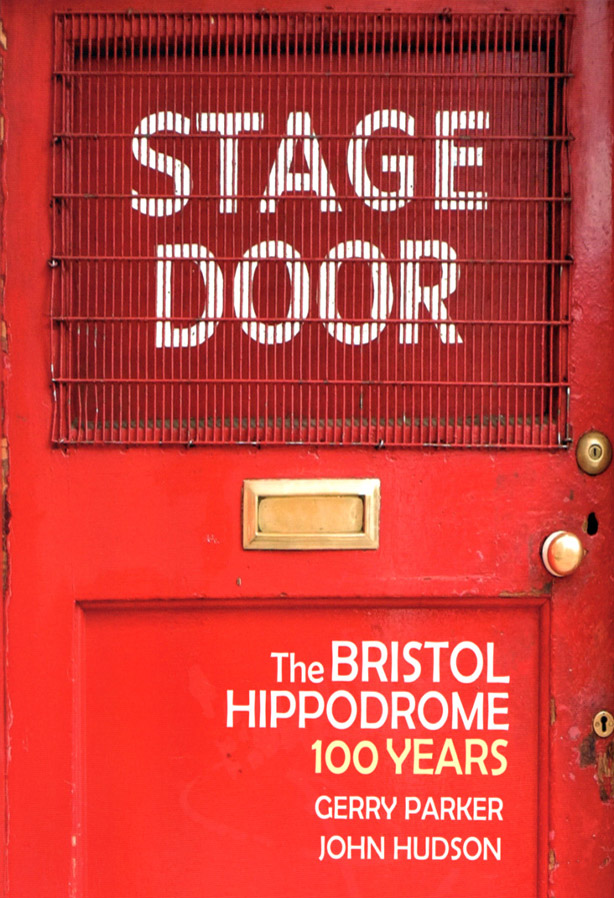The Bristol Hippodrome was, and still is, one of Britain’s major provincial theatres, high on the list of Number One tour venues. When Oswald Stoll asked theatre designer par excellence Frank Matcham to build him a new theatre in the city, he wanted it to rank along his company’s flag-ship and HQ, the London Coliseum. It is still a spectacular theatre inside but when it was first opened in December 1912 it was pretty spectacular outside as well, with an enormous tower dominating the docks which in those days encroached much further into the centre of the city than they do now.
In their new book, Stage Door, on the 100 year history of the Hippodrome, Gerry Parker and John Hudson take us on the theatre’s journey from it’s opening to the present day. The story charts the highs and lows, mostly common to all theatres, in chronological order, taking small detours on the way to dedicate sections to Oswald Stoll, Frank Matcham, Marlene Dietrich and many of the other great names associated with the building.
It reveals fascinating facts like the existence of the huge 100,000 gallon water tank that was concealed under the stage and the roof that opened (and still does) to let out the tobacco induced smog during the intervals. It tells us how the Hippodrome survived the blitz more or less intact only to be nearly destroyed by fire in 1948.
Like most theatres it was in turn threatened by the movies and then by television. In common with many theatres it decided that if it couldn’t beat them it should join them and in 1931 took down the red drapes and put up a nice white screen. The Hippodrome put on no live shows at all between 1932 and 1937 and only just survived the competition from the other great Bristol Theatre, the Prince’s. When the Prince’s was destroyed during the war the Hippodrome became the only grand touring venue in town and played host to the likes of Frank Sinatra and Laurel and Hardy.
Messrs Parker and Hudson’s book is not a dull academic tome but more an intimate portrait of a theatre that has been at the heart of Bristol’s social and cultural life for so many years. Yes, all the facts and figures are there but so are personal anecdotes and the memories of the people who worked there. We hear from the cleaning lady who was taken out for a Chinese meal by comedians Little and Large and Frank Bruno and we are given lots of snippets gleaned from local newspapers as well. The book is lavishly illustrated throughout with photographs, posters, press clippings and other memorabilia.
The Hippodrome was operated by Stoll-Moss Theatre until relatively recently but the decline started in the late sixties and by 1975 the theatre had become so run down that the Musician’s Union, among others, threatened to boycott it. When Stoll-Moss finally ran out of steam the theatre went through many changes of ownership until it was bought, along with sixteen other theatres in the group, by its current owners, The Ambassadors Theatre Group in 2009. Since then it has gone from strength to strength, rightfully regaining its place as one of the major provincial theatres in the country.
Parker and Hudson’s Stage Door is a book for anyone who has ever marvelled at the audacious auditorium of this great theatre or anyone, who as a child, squealed with joy at one of the Hippodrome’s spectacular pantomimes. It will, of course, also appeal to those interested in the history of entertainment, the Bristol Hippodrome being typical and a microcosm of all that has happened in British theatre in the past 100 years. A jolly good read and highly recommended. Michael Hasted
- Paperback: 160 pages
- Publisher: Redcliffe Press Ltd (5 Jun 2014)
- ISBN: 978-1908326249
- RRP £12.50



